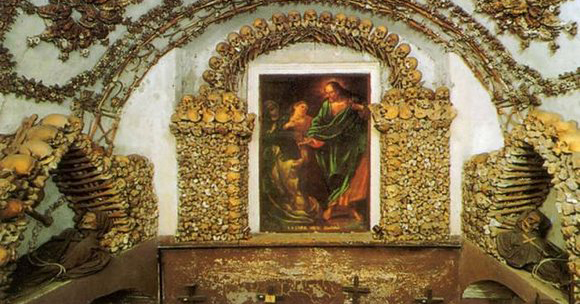Walking along the River Seine in Paris makes for one of the most leisurely strolls in the world.
Videos by Rare
Think about it. There’s the scenic view, and the Eiffel Tower and Musée d’Orsay are just a short walk away. Plus, there’s the city sewer system below street level, and it’s waiting to be explored.
That’s right, one of the more offbeat attractions in the “City of Light” lies beneath the city streets at the Musée des égouts de Paris (Paris Sewer Museum). At first blush, it may sound like this museum stinks, but make no mistake: It’s as educational as it is eye opening.
In addition to the historical interpretation of the sewer system, visitors can take a close up look at the tools workers use — such as a giant iron ball — to clear clogs in the sewer lines.
RELATED: Attention, travelers — can you place these American landmarks?
Weird, unexpected and surprising attractions make for the most delightful destinations on any vacation. So, when weirdness rears its head, embrace it.
Now, it’s not just about the kitschy type of attractions, such as the World’s Largest Bottle of Catsup, though that does exist in Collinsville, Ill. It’s about the downright bizarre places.
For that, look no further than Rome, a city famous for its gladiators and ancient ruins — and artwork made from human bones?
That’s right. The Capuchin Crypt offers a different perspective of the “Eternal City.” The crypt, beneath Santa Maria della Concezione dei Cappuccini, is home to the skeletal remains of thousands of bodies said to be Capuchin friars buried by their order. While St. Peter’s in Vatican City features Michelangelo, the chapels of the Capuchin Crypt are adorned with skeletal remains.
The bones are not merely a macabre display, but a reminder of how swiftly time on Earth passes and humans’ mortality.
RELATED: 10 weird things you’ll only see in Florida
On a similarly religious, yet less macabre front, a shrine Tucson, Ariz., is said to be “the only Catholic shrine in the United States dedicated to a sinner buried in unconsecrated ground.” El Tiradito, which, according to one source, means the castaway, was first built in the 1870s and later relocated to its current location.
According to one version of the legend, the shrine is dedicated to Juan Oliveras, an 18-year-old ranch hand whose father-in-law killed him after he had an affair with his mother-in-law.
Still, the reason for the shrine isn’t enough to deter visitors. It was even added to the National Register of Historic Places in 1971.
Miami, meanwhile, is home to one of the oldest buildings in the United States. But, what makes this structure so unique isn’t the building itself, but how it ended up in South Florida.
St. Bernard de Clairvaux Church was first built in the 12th century in Segovia, Spain. Publishing magnate William Randolph Hearst purchased the building in 1925 and planned to relocate it to his house in California.
In short, things didn’t go according to plan, and because of an outbreak of hoof and mouth disease in Segovia, the 11,000 crates containing the historic building were quarantined in New York City. In the 1960s, the Episcopal Diocese of South Florida purchased the building and reassembled it piece by piece.
It remains a popular tourist attraction known as the Ancient Spanish Monastery.



